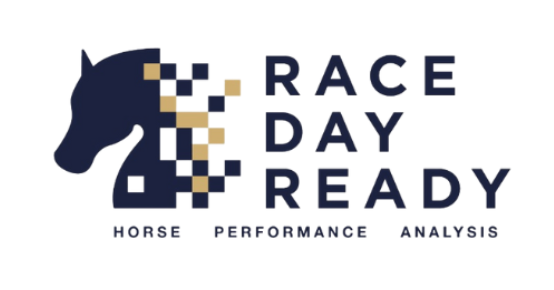We were fortunate to have the opportunity to interview Romane Borrione, a performance and data analyst specializing in racehorses based in Australia. In this insightful discussion, she delves into the topic of treadmill training, providing a comprehensive overview of its applications, benefits, and essential considerations.
Can you briefly introduce yourself and your job?
I’m Romane, a performance and data analyst. My role involves analyzing a horse’s performance post-workout and providing detailed reports to the trainer. I offer insights on managing workload and advice on enhancing the horses’ fitness.
Could you discuss your specific experience with treadmill training?
In Australia, treadmills are widely used by trainers for both recovery and training purposes.
Treadmills offer standardized exercises that can be consistently replicated. They allow a greater freedom of movement without a rider or equipment on the horse’s back. The consistent, unchanging surface enhances its appeal, and the incline feature targets different muscle groups compared to traditional flat track exercises. Additionally, it provides the flexibility to control speed.
Are there different types of treadmills?
Yes, there are treadmills where galloping isn’t possible, and there are also water treadmills designed more for recovery than training. The most widely used in Australia are high-speed treadmills, allowing galloping and reaching speeds up to 42 kilometers per hour.
What do you think are the benefits of training on a treadmill?
The treadmill offers numerous advantages, the most significant being its consistent surface which ensures controlled exercise. Knowing precisely what your horse is doing allows for workouts tailored to your horse’s needs.
Using a heart rate monitor, such as Equimetre, enables more precise control of exercise intensity compared to the racetrack. Additionally, exercises that might be challenging on the track, like interval training, become more manageable on the treadmill, allowing easy transitions between walking and cantering.
This is particularly beneficial for horses recovering from injuries or dealing with issues like sore backs, knees, or hamstrings. Without a rider, training can be adjusted by modifying the treadmill’s angle or speed, allowing for targeted muscle strengthening and control training.
Would you say this is a specifically adapted training method, or can it be integrated into any workout?
The treadmill’s versatility is remarkable—it can be utilized in various ways to cater to different training needs. It allows for diverse workouts, and can serve as a supplementary tool, offering a different type of exercise to enhance fitness or engage in interval training. Whether a trainer manages two horses or a hundred, the treadmill can be a versatile asset, benefitting all types of horses (sprinter, miler, stayer even jumpers), with all types of objectives.
Are there any limits or risks?
While the treadmill is excellent for training, it’s important to acknowledge that it can’t fully replace a gallop with a jockey on the grass—an essential element of training. Training solely on the treadmill can pose challenges. One concern is the variety of exercises and intensities, particularly with the incline, can sometimes be challenging for an unexperienced horse. Monitoring how the horse responds to these exercises is crucial, emphasizing the importance of using a heart rate monitor, like Equimetre. In the absence of a rider, the moving surface dictates the speed and without the monitor, assessing if the horse is struggling with the exercise may be challenging. Therefore, close observation and continuous monitoring of parameters such as intensity, speed, and duration are essential to understand how the horse is handling the workout.
What do you consider to be the essential exercises? Can you provide a concrete example?
The treadmill is widely used as a recovery tool in Australia. Following a race or a gallop, it serves as an effective recovery session. Typically, the routine involves trotting for 5 minutes, followed by cantering at 24 km/h with a low angle for 2 to 5 minutes, tailored to the horse’s needs. This constitutes a form of active recovery. The treadmill’s flexibility allows for various exercises based on your goals and the desired workout duration. It can also be used for warm-up, with some trainers preferring to trot and canter their horses before a gallop. This is particularly useful for warming up a horse stressed by a rider’s presence or in suboptimal track conditions, where a riderless warm-up is preferred, or if the horse is a little sore back. And finally you can use the treadmill to gallop a horse, and do so at a specific speed for two or three minutes or incorporating interval training, such as three one-minute gallops with recovery periods in between. The treadmill offers flexibility to tailor exercises according to your horse’s needs and training objectives, with speeds ranging from 32 to 36 kilometers per hour and the incline angle varying from 0 to 6 degrees.
How do you analyze the data with the parameters you’re looking at?
Always ensure the Equimetre is in place and monitor the heart rate live. During the warm-up, it’s important to maintain the heart rate within a moderate zone to ensure a smooth warm-up without causing stress to the horse. This allows you to verify that the heart rate aligns with your desired level, a principle that applies throughout the exercise. I closely observe the heart rate, particularly during trotting, as it’s a valuable indicator for detecting subtle lameness issues in the horse. During the recovery phase, it’s important for the horse’s heart rate to drop below 110–120 beats per minute within 2 minutes. If the horse doesn’t recover within this timeframe, it may indicate that the session was too strenuous for the horse, necessitating adjustments. Conversely, if the horse recovers successfully, you can consider gradually increasing the intensity in subsequent sessions.
Do you have any advice for a trainer who would like to try this treadmill method?
Start by familiarizing your horse with the treadmill, using it for warm-up and cool-down sessions. Teach them how to step onto the treadmill, allowing them to become comfortable with the equipment. Horses require time to adjust to the treadmill, and multiple introductions are necessary to ensure they feel comfortable and cooperative, especially if the work is more demanding. I strongly recommend incorporating a heart rate monitor and having someone knowledgeable assist in interpreting and analyzing the data. This collaborative effort aids in determining the most beneficial exercises based on your training methods and your horse’s individual needs. Patience is key to yielding results and determining optimal days and exercises to complement or substitute treadmill sessions. Always keep the Equimetre activated to accurately gauge the treadmill’s impact on your horse’s physical condition. This consistent monitoring ensures a comprehensive understanding of the exercise’s effects.
➡ To contact Romane :
📩 info@racedayready.com.au
📞 +61 466 283 706
🖥 Instagram: @racedayready_aus

Key Words: treadmill, recovery, monitor, heart rate, analyst, data
Photo: Suzanna Lupa

